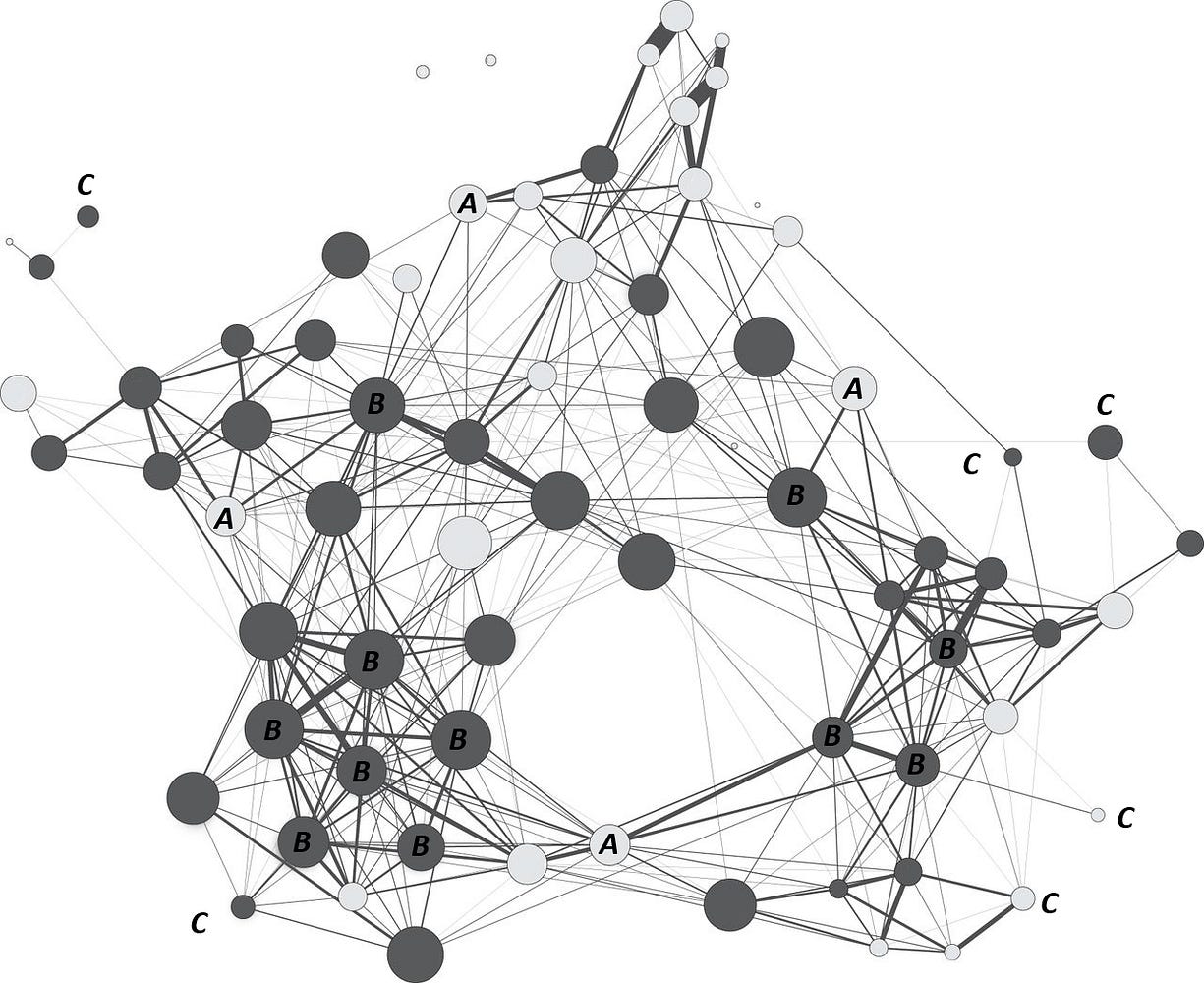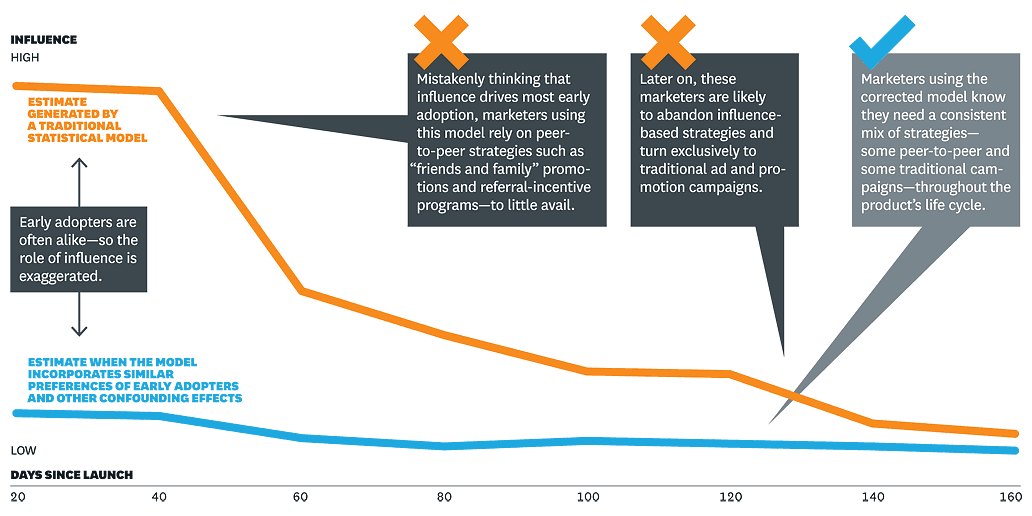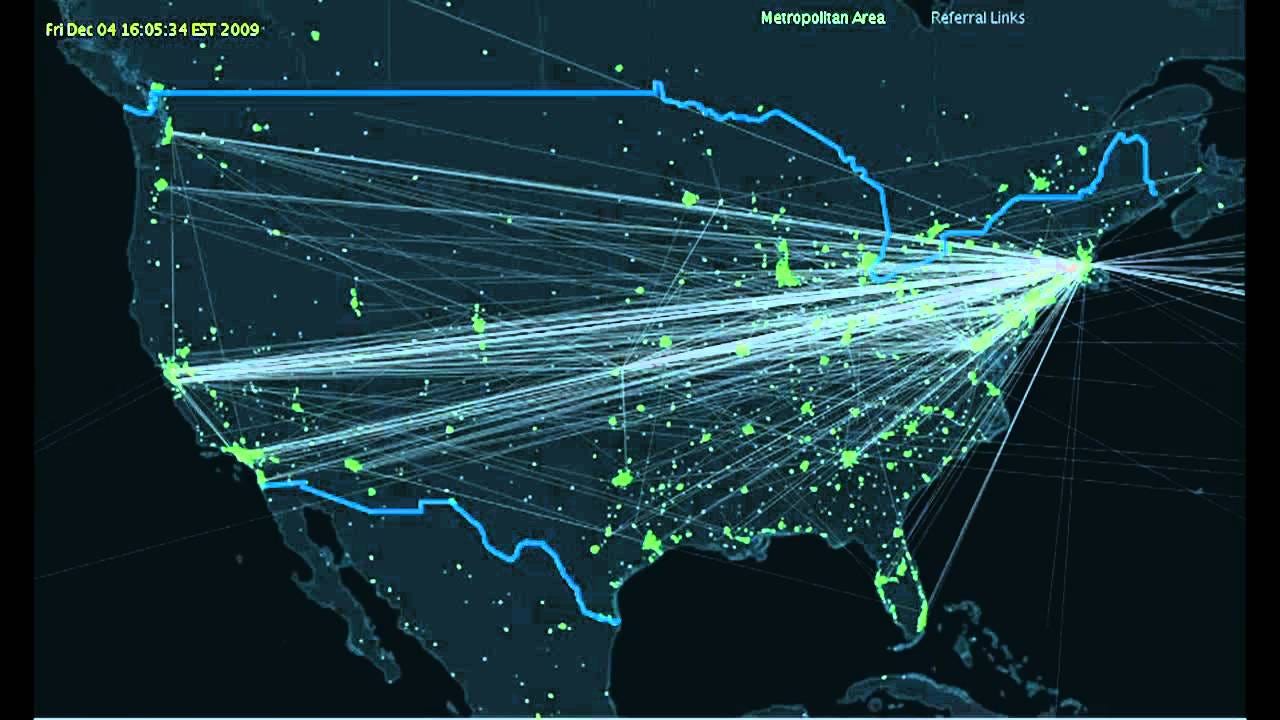Can we use social influence to drive change for good?
Stay up to date:
Hyperconnectivity
When people are asked to define social influence they tend to think about highly visible and seemingly influential people like Kanye West, Oprah Winfrey or Elon Musk. Time’s annual list of the 100 most influential people provides insights into who is shaping the public agenda in the United States. There is no denying that the people listed do indeed have a major impact on the world, but in our everyday decisions we are much more likely to be influenced by our friends, families or colleagues – or even a passing stranger on an internet forum, review site or news platform.
Think of your daily decisions about what clothes to wear, which articles to read and what products to buy. When we take action, we are susceptible to all manner of influences coming from our social environment. For instance, if I see that a friend just bought a new brand of T-shirt, in what way could this influence my own purchase decision? If I decide to buy the same shirt, was it because my friend influenced me or because we both like the design — and also happen to be friends? We usually have a number of people whose opinions we value in certain areas — and this makes things more complicated.
How can we measure social influence?
The social media landscape is evolving rapidly, and measuring influence in this unpredictable environment is a challenge — even for the data-science teams at the largest global technology companies.
Google, for example, uses a modified version of the page rank algorithm to measure influence according to the number of nominations or inbound links received. This method was patented and implemented across Google+ and YouTube to account for how messages spread through the network.Yahoo’s alternative approach goes one step further: it estimates a “social authority score” for each user, calculating the size of the user’s network and their friends’ networks. A similar methodology is also used by Klout to measure the likelihood of a user’s followers, friends or fans engaging and sharing updates with the rest of their networks. This approach is highly applicable because it draws on users’ past activity patterns to estimate future interactions.
Facebook recently patented a more sophisticated framework to identify local influencers in social networks. Instead of looking at the global spread of a particular piece of content, such as a link or a photograph, they are focusing on the local level of a users’ personal network. By measuring the rate at which a piece of content is shared within the personal network of an individual user, Facebook hopes to identify an army of ordinary people who exert a degree of influence over their peers.
Sinan Aral (2013) on the effects of social influence vs. homophily. Published in Harvard Business Review.
From cheap talk to behavioural change
The traditional models have one fundamental flaw, however: they tend to conflate the ability of speaking out with the likelihood of causal behavioural change. In fact, metrics such as the size of your network or the number of times your content is shared, have little to do with actual changes in habits, consumption or voting behaviours.
The first problem is the causality of behavioural change. Let’s face it, somebody like Kanye West may have more than 13 million Twitter followers and a remarkably high Klout score, but how many times have you ever done what Kanye told you to do? MIT Professor Sinan Aral puts it in more provocative terms: if Kanye West is “the quintessential influencer but no one does what he suggests, in what way is he influential?” This example demonstrates an important point: having a big microphone is not the same as having real influence.
Using the statistical techniques above, people who amass social connections on a site like Facebook could be mistaken for influencers, and investing in them would be a waste of marketing dollars. Instead, Sinan proposes that we look at how our peers directly affect how we behave ourselves.
The second problem is about the persistence of something called “homophily” in social networks. This is the tendency to associate with likeminded people — as in the old saying “birds of a feather flock together”. Consider the potential impact of a blogpost on climate change by Al Gore: naturally it would be most shared among his followers and political affiliates, but these are the very people who already have the same mindset. They are more similar to one another than to non-followers or other randomly selected users.
For influence to be genuinely effective it would have to reach and cause behavioural changes among people who hold different beliefs. So, depending on the degree of homophily among a given population, we might need to consider alternative policy tactics and marketing strategies to achieve better outcomes.

Examples of three different network positions in a social network: individuals bridging several clusters (A), individuals in dense clusters (B) and individuals in peripheral positions (C).
The importance of networks
A common myth about social influence is that opinion leaders are always the best-connected and most central individuals in a network. This is not necessarily the case. To understand why, let’s look at theunderlying network structures in which individuals are embedded.
Let’s look at the mechanisms that are believed to influence particular behaviours. For instance, in the context of a conflict, political election or company merger it may be important to identify the individuals who act as bridges in a network (A), connecting modular sub-networks. On the other hand, when power dynamics are at play it is critical to find out who holds highly centralized positions, such as in a hub (B).
Maximizing the number of influential hubs can help the strategic spread of messaging, of the sort that might be used for product marketing or promoting healthier lifestyles. Alternatively, if a proposed behaviour change is risky or costly (mobilizing people for a protest movement, for instance) it makes sense to approach individuals on the periphery first (C) because they are more susceptible to influence.
Highly connected individuals tend to be subject to groupthink and thus resistant to change, whereas loosely connected individuals on the margins are more likely to adopt new ideas and change their behaviour. Recent experimental evidence supports this notion. Next, according the social network theory of triadic closure, new behaviours can spread from person to person and evolve into a cascade, resulting in large-scale social change.
This is why scrutiny of the underlying network structure is vital in understanding the dynamics of social influence. If we understand how behaviours spread through a population then we could potentially promote pro-social behaviours (such as exercising more and being more ecologically minded) at the same time as discouraging negative behaviours (such as smoking, violence and waste).
Geographical spread of messages by the MIT team during the 2009 DARPA challenge.
Designing effective interventions
So how can we help policy-makers and businesses improve the mechanisms of social influence so that it can be used for the wide good? Here are three examples of strategies you could pursue to game the system.
1. Design selective exposure to reference groups with desired behaviours.
We often look at people like us to see how they have handled a particular situation. It was the subject of a recent study at the University of Pennsylvania, where researchers aimed to stimulate more physical activity among students. The results of the study implied that behaviour can be affected by social aspiration. This could be an effective strategy for encouraging a range of positive behaviours — studying harder, HIV testing and living a more sustainable lifestyle, for example. In this regard, maybe we don’t need a carrot and a stick to motivate people; maybe we just need to facilitate their exposure to other people who are engaging in a certain behaviour already ?
2. Design selective exposure to early opinions to inspire herding effects.
For decades, social psychologists have theorised that humans like to mimic the behaviours of others. Computational social scientists have now confirmed that this is indeed happening online, and at unprecedented scale: people tend to like things if they see that others have liked it before. In a randomized, controlled trial on a news-aggregation website, a team of MIT researchers experimented with the initial number of likes and comments on a group of stories. They found that early reviews drove subsequent ratings. A single up-vote was associated with a 25% increase in overall ratings. The implication, therefore, is that an idea with a small group of initial supporters could set the tone and narrative for ensuing discussions – within ethical limitations. This is especially applicable to political and civil debates, movie reviews and early stage technological inventions.
3. Design incentives to explicitly foster peer-to-peer influence.
There are well-known rules for designing incentive schemes. Referral marketing strategies have worked well in certain contexts, but when it comes to mobilizing groups of people around a specific task, there are more effective ways to apply the mechanisms of social influence. In the DARPA Network Challenge in 2009, competing teams of scientists were asked to locate 10 red weather balloons in different locations around the US. Using a recursive incentive structure to mobilize a group of volunteers, the winning team from MIT was able to find all the balloons in less than nine hours. How did they do it? They devised incentives that motivated people to forward the message to their peers, promising to share the $40,000 prize up the chain of all those who spotted a balloon. Identifying the right incentive structure is essential to activating large groups of people in cases of crisis, natural disasters, protest movements and crowdfunding campaigns.
What does the future hold?
As this blog post shows, social influence is the ability to drive causal behavioural change. Understanding and utilising the dynamics of influence can help decision-makers accomplish tasks set by political, economic and social agendas with unprecedented speed, accuracy and scale. However, a large number of open questions remain — especially with regard to disentangling the effects of social influence from homophily. Sinan Aral notes that “the future of social influence marketing will depend on robust analytics to increase our understanding of what drives behavioural change.” In relation to this, computational social scientists can truly make a difference, particularly by engaging with other actors from public policy and strategy in collaborative work, integrating analysis, intervention and implementation.
Have you read?
3 things to know about tomorrow’s business leaders
How understanding the ‘shape’ of data could change our world
To keep up with Agenda subscribe to our weekly newsletter.
Author: Vyacheslav Polonski is a network scientist at the Oxford Internet Institute and a Global Shaper at the World Economic Forum, attending the 2015 Annual Meeting of the New Champions in Dalian, China.
Don't miss any update on this topic
Create a free account and access your personalized content collection with our latest publications and analyses.
License and Republishing
World Economic Forum articles may be republished in accordance with the Creative Commons Attribution-NonCommercial-NoDerivatives 4.0 International Public License, and in accordance with our Terms of Use.
The views expressed in this article are those of the author alone and not the World Economic Forum.
Related topics:
Forum Stories newsletter
Bringing you weekly curated insights and analysis on the global issues that matter.
More on Industries in DepthSee all
Ibrahim Odeh and Oliver Tsai
July 2, 2025
Erik Crouch
July 1, 2025
Francisco Betti
May 9, 2025
David Elliott and Johnny Wood
April 25, 2025
Katia Moskvitch
April 14, 2025







